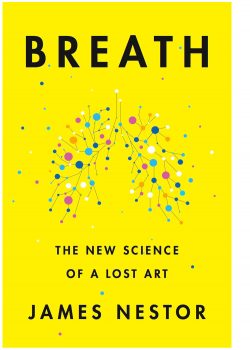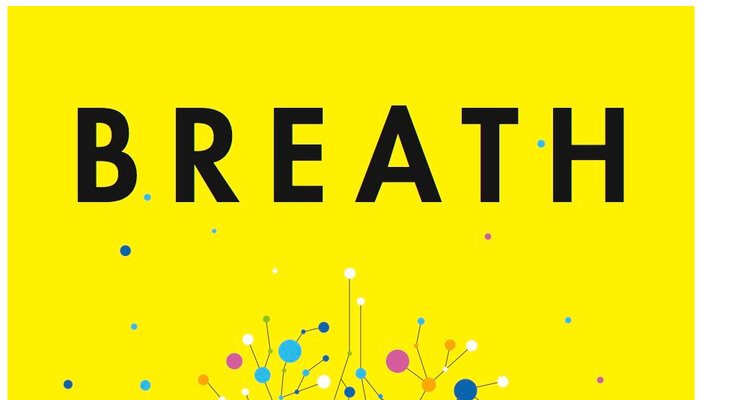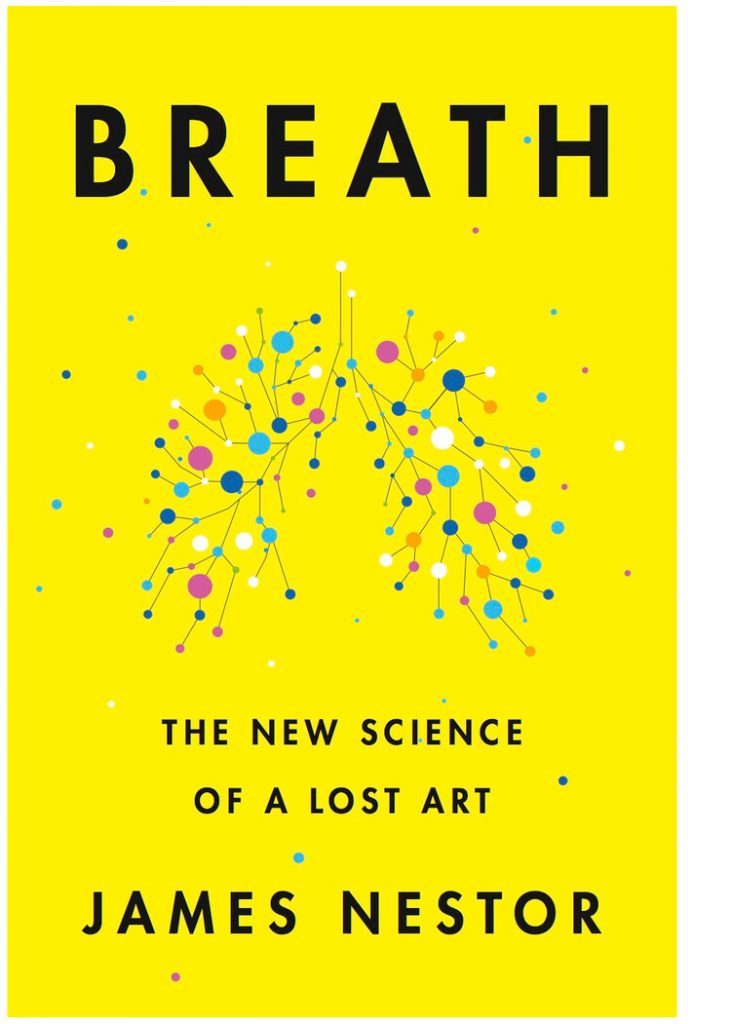Reviewed by Danielle Leonard
Did you know that your body is much better off if you breathe through your nose instead of your mouth? Or that mouth breathing disrupts sleep and can cause sleep apnea? If these claims surprise you, as they did me, then you will likely be intrigued and enlightened by the newly released book Breath: The New Science of a Lost Art by journalist James Nestor.
When I told a close friend that I was reviewing a book called Breath that was about, um, breath, she was incredulous. “That’s it? Just breath?” I laughed. I agreed it didn’t sound like a page turner, but Nestor’s deep research into this seemingly innocuous human process was not only fascinating, it changed my life.
Motivated by a desire to understand how breathing affects his own health, Nestor undertakes to learn and practice a variety of breathing techniques over the course of a decade in what he describes as “a scientific adventure into the lost art and science of breathing.” Far from a textbook style read, however, the author weaves his personal experiences throughout the book, producing an honest and, at times, humorous narrative that educates as much as it entertains.
I, also, had a personal stake in reading Breath. As a child, I suffered relentless allergies that clogged my nasal passages to such an extent that if I wasn’t inhaling medicated decongestants (which I subsequently learned have permanent side effects), I was stuffing my nose with tissue. Mouth breathing was never a choice for me, it was a way of life. Even though I outgrew my allergies in my 20s, my habit of mouth breathing at night never abated. What did it matter? Plenty, it turns out.
Forty per cent of today’s population, Nestor explains in Breath, suffers from chronic nasal obstruction; around half are habitual mouth breathers with females and children suffering the most. Optimal respiration, we also learn, goes beyond the basic mechanics of nose versus mouth. The book describes a myriad of breathing styles that have the capacity to ease, and even reverse, modern maladies such as asthma, anxiety, attention deficit hyperactivity disorder and psoriasis.
Some of these techniques have been around for hundreds, even thousands, of years – yogis familiar with pranayama would be aware of some of them. And, while the names may have changed and techniques repurposed, Nestor asserts such conscious breathwork “give us the means to stretch our lungs and straighten our bodies, boost blood flow, balance our minds and moods, and excite the electrons in our molecules to sleep better, run fast, swim deeper, living longer and evolve further.”

Breath is the “missing pillar of health” according to Nestor – a premise he expertly proves, in my opinion. I particularly appreciated the appendix that describes how to perform each of the breath techniques he writes about. Ideal for readers who want to put their newfound understanding to practical use.
If practicing breathwork seems too much work, Nestor offers the simple technique of what he deems the perfect breath: “Breathe in for 5.5 seconds, then exhale for 5.5 seconds. That’s 5.5 breaths a minute for a total of about 5.5 liters of air. You can practice this perfect breathing for a few minutes, or a few hours. There is no such thing as having too much peak efficiency in your body.”
I highly recommend this book. Its relevance is made more pronounced today as the world struggles with the pandemic caused by COVID-19 – a virus that attacks the respiratory system in many sufferers.
The book will take 10,000 breaths to read from first page to last, writes Nestor in the introduction. And, if he’s done his job correctly, Nestor promises that by the 10,000th breath, you will “know how the air that enters your lungs affects every moment of your life and how to harness it to its full potential until your final breath.”

